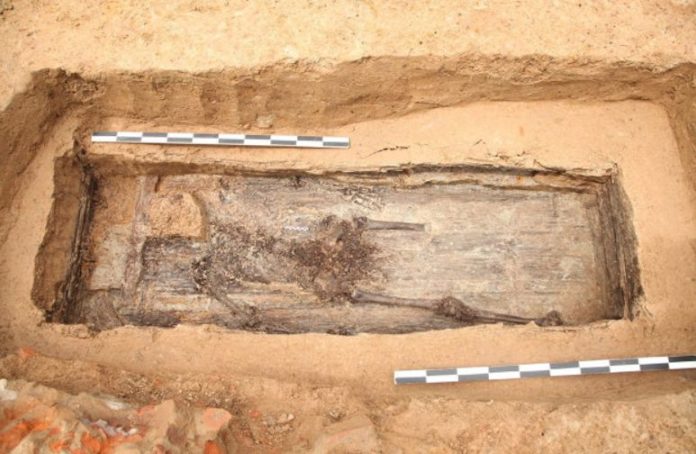According to the Institute of Archeology of the Russian Academy of Sciences confirms on it’s Facebook page with a link to Le Point that the remains found in the summer in the Smolensk region really belong to the French general Güden, who died in 1812. The identification of the warlord of the war of 1812 was made possible by the analysis of the genome and its comparison with DNA isolated from the remains of his mother, brother and son Guden.
Charles Etienne Gueden (1768-1812) attended the same military school as Napoleon Bonaparte. He began his career in 1782 and was a member of the revolutionary and, later, Napoleonic wars. In 1804, he became the divisional commander of Louis-Nicolas Davout, the only Napoleonic marshal who did not lose a single battle. In 1812, Guden participated in the Battle of Smolensk and the day after its end, on August 19, in battle near the village of Lubino. One of the artillery rounds tore off his leg. The general was evacuated to Smolensk, and there he died soon after. The exact burial of Guden was unknown.
In July 2019, Russian and French archaeologists during excavations in the Royal Bastion of Smolensk found a solitary burial site, which, according to indirect indications, belonged to Guden. It contained the remains of a man of 40-45 years old with his left leg missing above the knee and a damaged right leg. There were no signs of military distinction in the grave. Since the general died in the hospital, he was not buried in his uniform, and military awards and an embalmed heart were sent to Paris. Anthropologists at the Institute of Archeology of the Russian Academy of Sciences examined the remains and confirmed that the leg could be torn off by an explosion – there were no signs of medical amputation of the limb. However, the genome analysis could finally confirm that the burial belonged to General Guden.
Employees of the General Directorate of Forensics of the Investigative Committee of the Russian Federation were able to extract degraded DNA from the teeth of a person buried in Smolensk. Analysis of the genome allowed to identify 13 autoimmune markers and 18 markers of the Y chromosome (it is transmitted by the paternal line). One of the teeth and bone samples were given to a French scientists for the study.
In France, at the request of one of the general’s descendants, Alberic Orleans, the family crypt of the Gueden family was opened and tissue samples of the mother, brother and son of the general were taken, from which researchers isolated DNA. Analysis of genetic markers allowed to establish the kinship of a man buried in Smolensk with members of the Guden family and thus identify the remains.
A few years ago, criminologists learned to identify a person by hair. Scientists have been able to show that the protein “profile” of hair is unique and the new method may be effective in forensics and archaeology.
